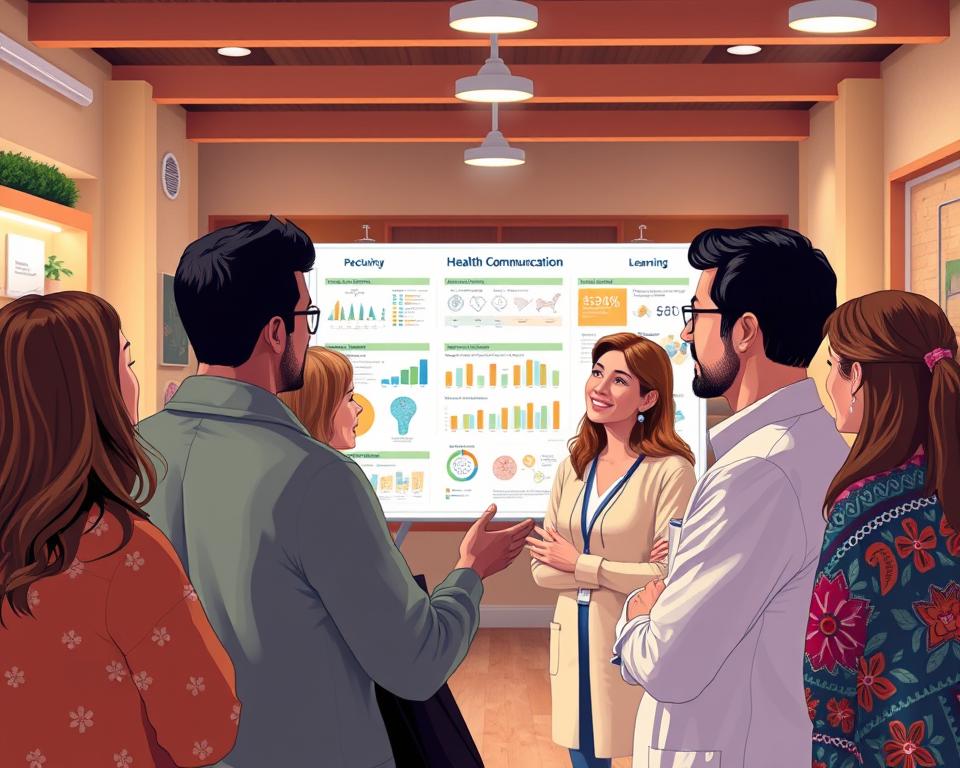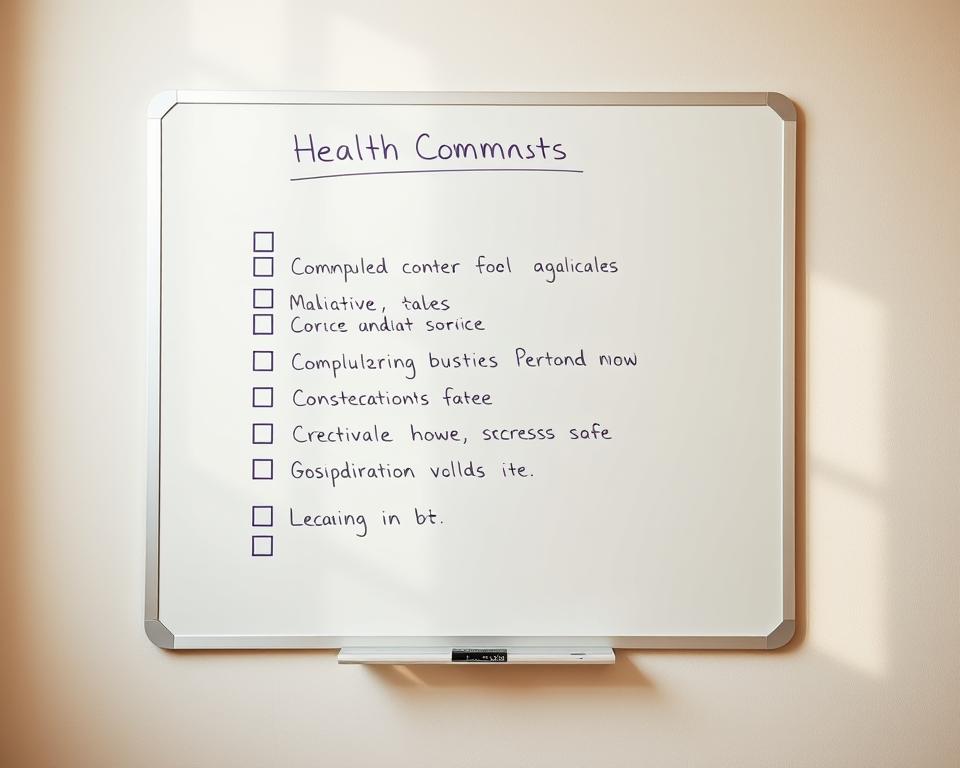Anúncios
HealthComms examples set the stage for clearer decisions in a crowded digital world.
Can one clear message change how your community trusts care? You will see why simple, evidence-informed health communication matters in 2025. Rising care complexity, more digital channels, and shifting trust mean your messages must be precise and fair.
This article previews proven health communication tactics, the metrics that signal quality, and a step-by-step action plan you can use. You’ll find guidance on audience-focused calls to action, privacy-safe tech choices, and partnerships that extend reach without overpromising results.
Use this guide to shape clear goals, pick the right channels—from clinics and schools to SMS and social—and measure progress with equity in mind. We cite reputable sources and note limits: this supports planning and awareness, not clinical decisions. For diagnosis or treatment, consult licensed professionals.
HealthComms examples that still work in 2025—and why they perform
Look at successful public health campaigns to learn what communication choices truly matter. Each case below shows a clear audience, one action, and simple language you can adapt ethically.
Anúncios
Truth Initiative — youth-focused messaging. They matched tone, platform, and content to teens and tied messages to one behavior: don’t start or quit. CTAs were simple: learn more or get help. That match of message and channel helped reduce teen smoking nationally (American Journal of Public Health reports).
Man Therapy — humor to reduce stigma. The campaign used a comic persona to open conversations about men’s mental health. Humor lowered barriers while links routed people to hotlines and tools. Tone plus resource connection made help-seeking more likely for men 24–54.
CDC’s GYT — partnerships and plain language. By teaming with MTV and running events, GYT reached youth where they were. Plain language and easy referrals drove large testing referrals in year one. Partnerships extended reach without huge budgets.
Anúncios
Know Your Lemons — visual literacy for breast health. Simple visuals map signs to action. The lemon metaphor makes recognition easier and invites people to seek care. Visuals are accessibility tools, not diagnostic claims.
What to borrow. Define one tight audience, state one clear action, and use friendly, plain language. Align content with local clinics, hotlines, and inclusive formats. Run lightweight tests (A/B visuals, CTA placement) on social media and community channels before you scale.
Measure what matters: track site-locator clicks, hotline calls, and event sign-ups to validate performance and equity of reach.
Metrics that matter: How to measure quality communication and outcomes
Focus your metrics on who you reached, how they engaged, and whether they acted. That trio helps you move from vanity numbers to useful insight. Keep measures practical, privacy-aware, and tied to program goals.
Start simple: pick a small set of KPIs and a review cadence so your team can learn and adapt.
- Reach & quality of reach: track unique audiences, impressions by segment, and audience fit rather than raw volume.
- Engagement signals: measure time on page, video completion rates, saves/shares, and meaningful comments to assess clarity and relevance.
- Action metrics: count clicks to a clinic locator, hotline call volume, appointment requests, test kit orders, and sign-ups.
Also monitor equity and safety. Track language availability, interpreter use, ADA formats, and uptake across groups. Document HIPAA-aligned workflows, explicit consent language, and limited role-based EHR access.
- Set baselines and targets, then review weekly or monthly with dashboards by channel and audience.
- Close the loop with short surveys and frontline staff insights to explain “why” behind numbers.
- Assign analytics ownership so healthcare and program teams agree on definitions and have timely access to data.
Use metrics as guides, not guarantees. Consult analytics and compliance professionals for setup, and prioritize minimized data collection to protect patients and maintain trust.
Core communication skills for care teams and public messaging
Strong, practical communication skills help care teams connect clearly with patients and communities. Use simple, research-backed habits that improve trust without adding time to visits.

Active listening and nonverbal rapport
Sit at eye level, keep open body language, and pause to listen without interrupting. These moves boost trust and make visits feel less rushed. Small changes signal attention and respect.
Plain language and teach-back
Replace jargon with plain language. After key points, ask the patient to teach back one step: “Can you share how you’ll do this at home?” That confirms understanding and reduces errors.
Ask “Is there something else?”
End with a normalized closing question to surface hidden needs. A brief prompt uncovers concerns that patients might otherwise not mention.
BATHE and interpreters
Use the BATHE frame for short rapport: Background, Affect, Trouble, Handling, Empathy. For consent or complex talks, engage trained medical interpreters. Do not use family members to translate.
- Standardize a short care team protocol so messages match across nurses and clinicians.
- Create scripts and public toolkits with friendly tone and short sentences.
- Practice with role-plays and micro-trainings to keep skills sharp.
Limitations: These are communication behaviors, not clinical advice. Seek formal training for advanced skills and interpretation services where required.
Your 2025 health communication tech stack: Tools that help, not hype
Your 2025 stack should cut noise, protect data, and help teams act faster. Build around reliable platforms that your team can sustain. Favor privacy, consent, and simple workflows over buzzy features.
Secure EHRs and role-based access
Prioritize secure EHRs with role-based permissions so only necessary staff view sensitive records. This reduces errors and protects confidentiality for patients and caregivers.
mHealth and SMS nudges
Use SMS and apps to nudge refills, appointments, and screenings. Keep messages plain, brief, and opt-in, and provide clear opt-outs to respect consent.
Telehealth, patient portals, and interpreters
Offer telehealth for follow-ups and portals for messaging, records, and forms. Integrate interpreter services so language access is consistent across services.
Dashboards and ownership
Stand up simple dashboards that track reach, engagement, actions, and equity markers with filters by language and location.
- Clarify who maintains data and who monitors KPIs.
- Pilot one tool at a time and document lessons before scaling.
- Consult IT, compliance, and clinical leaders to align with public health priorities and capacity.
From strategy to action: Build a plan your team can execute
Move from strategy into action by making one audience, one CTA, and one test. Start with a clear problem statement and a single, specific call to action that points to a real service or resource.
Define the audience, need, and single clear call to action
Write one tight audience description and one sentence that describes the need. Then craft a single CTA that tells people exactly what to do next.
Choose channels you already reach, then test new formats
Inventory channels you use now: clinic lists, email, school newsletters, and local radio. Pilot one new format—like a short video—and measure if it moves your CTA.
Partner locally: Schools, employers, community organizations, and media
Partnering with trusted organizations extends reach and credibility. Work with schools, employers, community groups, and local media to match messages to local needs and resources.
Set baseline, targets, and review cadence for continuous improvement
Define baselines for reach, engagement, and actions. Assign an owner, set biweekly reviews, and keep goals small and measurable.
- Prepare simple FAQs and talk tracks so your team answers common questions in plain language.
- Map privacy, consent, and interpreter access into every tactic to protect participants and boost equity.
- Pilot small, measure tightly, iterate quickly, and scale only what works in your community.
- Document learnings and handoffs so new staff can repeat the process without losing momentum.
For practical implementation guidance, see this resource implementation guidance that can inform your monitoring and consent practices.
Mini playbook: Practical HealthComms for common goals
This short playbook gives step-by-step moves you can use to boost reach and action for common health goals.
Mental health
Share 30–60 second videos with local clinicians or peers to normalize help-seeking. Keep tone warm, add a crisis hotline and a local resource CTA like “Call or text your local helpline now.”
Use social media and clinic waiting screens as channels, and partner with campus groups or local organizations to extend reach.
STI testing
Publish a mobile-friendly clinic map and offer opt-in SMS reminders before testing events. Use plain language in listings so people find hours and walk-in rules fast.
Partner with youth media or student health groups to drive visits and include clear CTAs: “Find a testing site near you” or “Text to book.”
Cancer screening
Use simple visual checklists and short risk info to demystify next steps. Offer appointment navigators, interpreter access, and transport options where available.
Channels: patient portal messages and mailed reminders. Partner with community clinics so your care team can receive warm handoffs.
Community fitness and nutrition
Publish culturally relevant recipes and start beginner walking groups. Promote free or low-cost local services and list one clear CTA: “Join a free walk this week.”
Work with local organizations and parks departments to host events and include teach-back prompts for outreach staff to confirm understanding.
- For every play: define one audience, one CTA, two owned channels, and one trusted partner.
- Track actions: map clicks, hotline calls, and scheduling requests; compare results by neighborhood and language.
- Protect access: use role-based access and interpreters so referrals reach the right care providers and services.
Conclusion
, Focus your closing move: pick one audience, one CTA, and commit to a 90‑day test. Start small, use plain language, and partner with local organizations so your message reaches the right people.
Protect privacy, use trained interpreters, and enforce role‑based access so services stay safe and inclusive. Let your care team and communications teams share ownership of data and results.
This guide supports planning and learning, not medical advice. Consult licensed clinicians, IT, and compliance experts as you implement.
Take one step today: choose one goal, form a small cross‑functional team, launch a short pilot, measure what matters, and iterate with community feedback.



